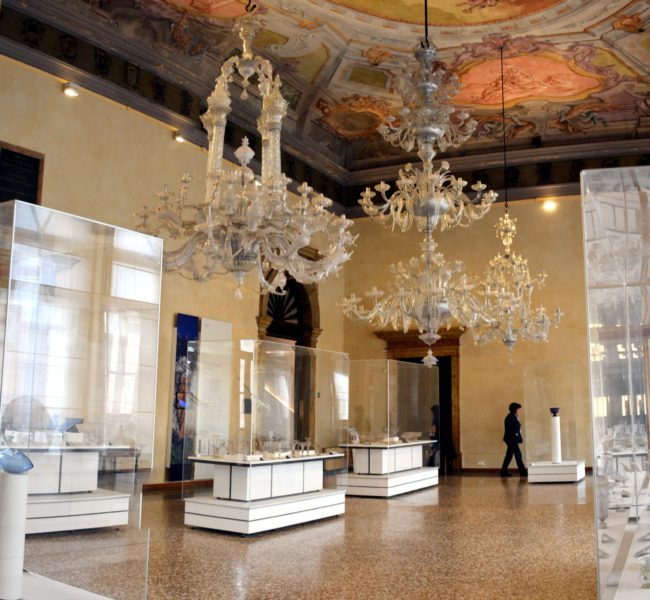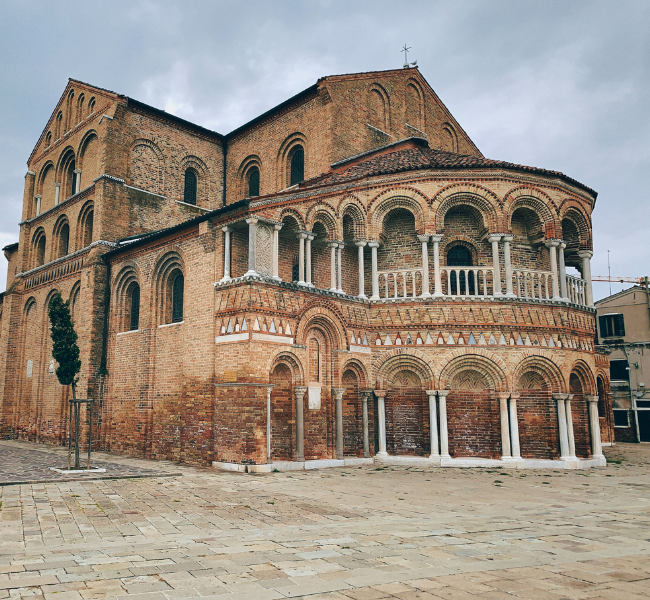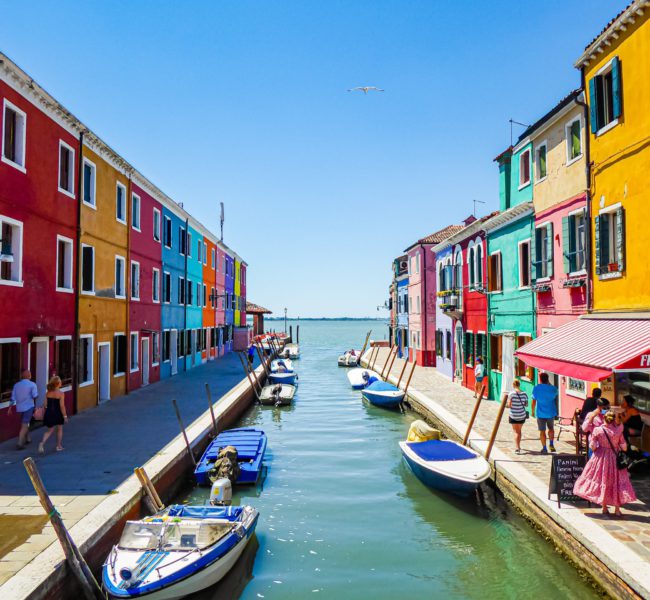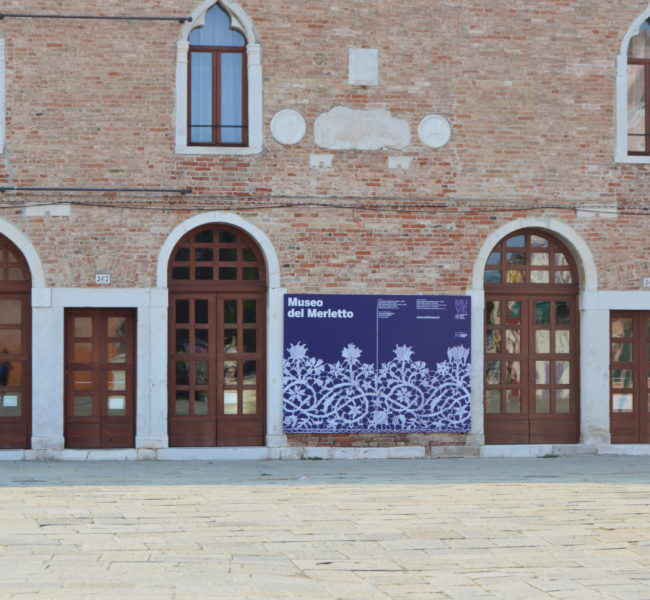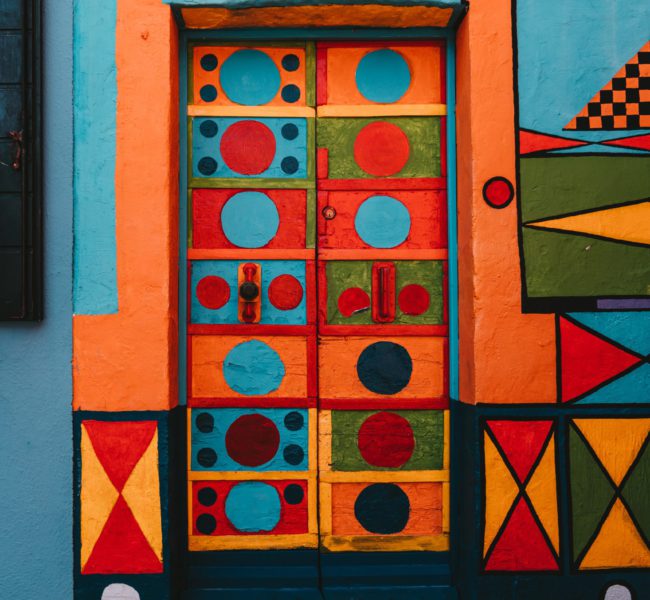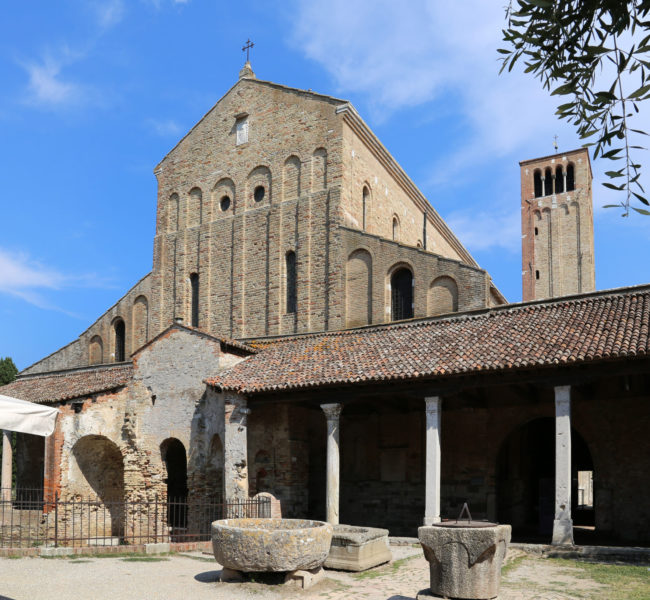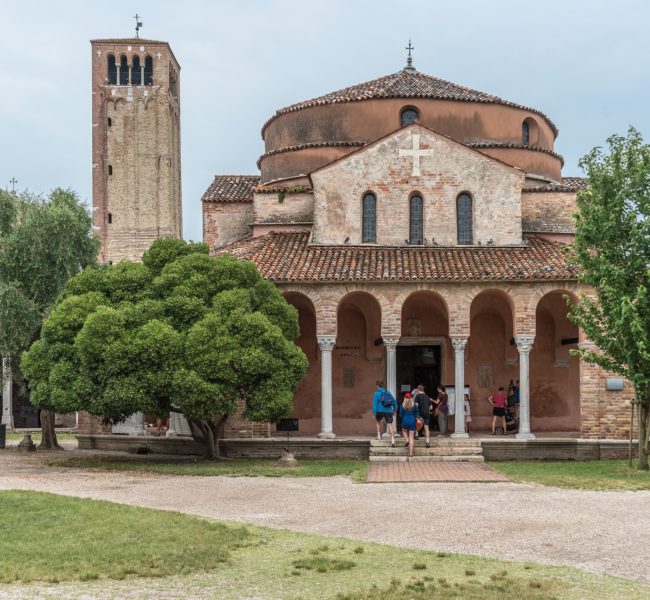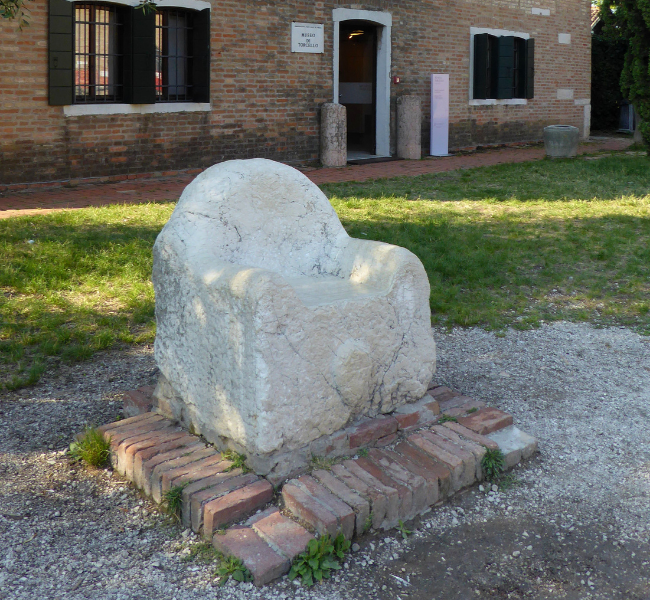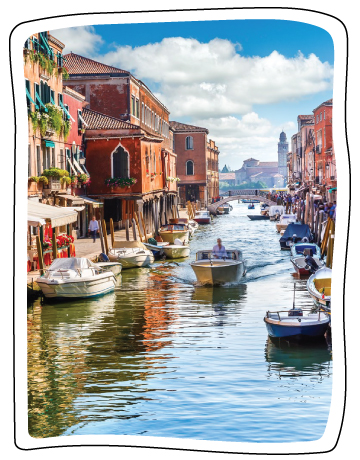Friendly disclaimer!
We want to be as accurate as possible, but given these challenging times, we urge you to recheck that the venues are open when you decide to visit.
Aptly nicknamed La Serenissima or “The Most Serenely Beautiful One”, Venice is a fairy-tale island-city made of six districts that speckle the Venetian lagoon. Dorsoduro in the south, San Polo and Santa Croce in the west, Castello extending from the north to east, Cannaregio in the northwest, and the bustling San Marco at the heart of it all.
Marvel at the epic grandeur of Venice’s Baroque architecture, reminiscent of its powerful history. Let its staggering collection of Renaissance masterpieces, including the likes of Bellinis and Tiepolo captivate your senses. Be serenaded down the Grand Canal on an intimate gondola ride or feast away on lavish spreads of lagoon seafood and Veneto’s signature prosecco at canalside osterias. Immerse yourself in its intoxicating Venetian frenzy with our three-day itinerary for Venice.
Venice three-day itinerary at a glance
Day 1
Begin your Venice itinerary from the central square of San Marco, surrounded by some of the most prominent attractions in Venice. Start your tour of the square with the Correr Museum that highlights various aspects of Venetian culture, history and art. Climb up the nearby bell tower of St. Mark’s Basilica or Campanile for a panoramic view of this legendary city. Visit the Basilica itself (after which the square was named), to be blown away by its sheer splendour. Take a look at the historic home of Venice’s Dodges at the Palazzo Ducale and unravel the dark history behind Bridge of Sighs. Choose from a private or shared gondola tour and glide down the city’s narrow canals for a magical end to the day.
- St. Mark’s Square
- Correr Museum
- Campanile
- St. Mark’s Basilica
- Doge’s Palace
- Bridge of Sighs
- Gondola ride at sunset
Day 2
Cross the oldest bridge over the Grand Canal, the Rialto Bridge and head toward the market located at its base. Shop for fresh local produce and seafood from the centuries-old Rialto Market and make your way to Frari Church located at the heart of San Polo district. Admire the impressive frescos and architecture of Scuola San Rocco before heading to the waterfront Ca’ Rezzonico in the Dorsoduro district – one of the only palaces in Venice still accessible to the public. At the entrance of the Grand Canal, spot the exemplary domes of ‘La Salute’, a basilica built to commemorate the end of the deadly plague of 1630. Depending on your preferred flavour of music, head to the nearest opera house, Baroque music salon or a snazzy jazz club to groove the night away.
- Rialto Bridge
- Rialto Market
- Frari Church
- Scuola San Rocco
- Ca’ Rezzonico
- Basilica di Santa Maria della Salute
- Catch a concert
Day 3
For your final day in Venice, island-hop across the neighbouring islands of Burano, Murano and Torcello on the Venetian lagoon. While at Murano, famed for its glass-making factories, stop at a glass furnace to witness local artisans at work. Next, spot the brightly coloured houses of Burano and delve into the history of the world-famous Burano lace. Finally, the sparsely populated northernmost island of Torcello offers an eerie atmosphere, worthy of a quick stop. Head back to Venice for the night and stroll along the vibrant streets of Fondamenta Misericordia, where you’ll be spoilt for choice with its mind-boggling varieties of restaurants, wine bars and more.
- Murano
- Burano
- Torcello
- Fondamenta Misericordia
Detailed 3-day Venice itinerary
Day 1
St. Mark’s Square
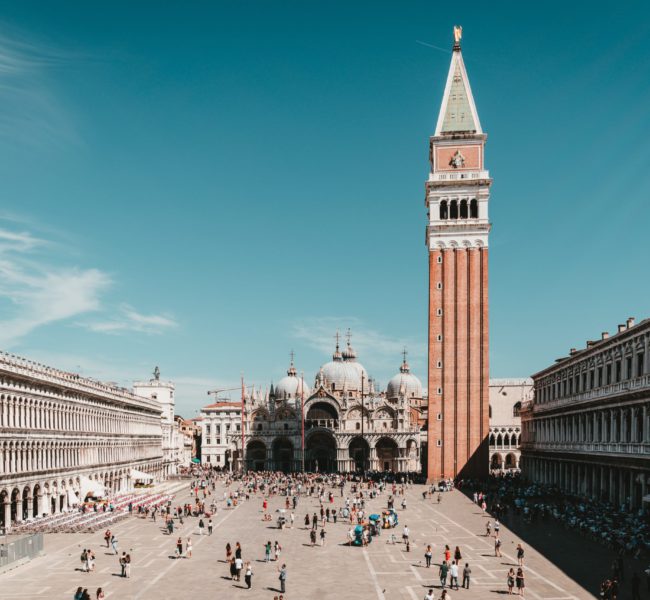
Referred to as “the world’s most beautiful drawing room” by Napoleon himself, Piazza San Marco or St. Mark’s Square forms the social, religious and political heart of Venice. With some of the city’s most iconic buildings including the St Mark’s Basilica, the Doge’s Palace and the Museo Correr located right within the piazza, it is without a doubt, Venice’s most prominent square.
Things to do:
- Visit the columns of Saint Mark and Saint Theodore located near the entrance of the square. The two columns made of granite and marble were a spot for public executions in the 18th century.
- Depending on when you visit the city, experience the Acqua Alta, a phenomenon by which Venice gets flooded temporarily when the Adriatic Sea tide rises.
- Visit the Torre dell’ Orologio also known as the St. Mark’s Clock Tower, considered to be a 15th-century engineering marvel. During Ascension week and Epiphany, statues of the Three Wise Men emerge from the clock tower every hour, putting on a charming show for visitors
- Explore live music at various cafes in the piazza including Caffè Florian, one of the oldest bars in Italy.
- Take a breather from all the sightseeing around St. Mark’s Square at Giardinetti Reali or the ‘Royal Garden’. Located right around the corner from the square, these gardens offer sprawling lawns, gurgling fountains, and plenty of benches to relax on.
Unravelog tip: Eating and drinking at the piazza is forbidden, so is feeding the pigeons and littering. However, the gardens at Giardinetti Reali are a great alternative to enjoy a leisurely picnic.
Useful information:
- Location: Piazza San Marco
- Timings: Always open
- Cost: Free entry
- How to reach:
- By water bus: Two of the Grand Canal’s year-round Vaporetto lines, San Zaccaria or San Marco. Lines 1, 2, 41, 42, 51, 52, N and LN.
- By foot: Follow the yellow ‘San Marco’ signs on the corners of buildings. The walk from the train station or the Piazzale Roma will take 30 minutes to an hour.
Correr Museum
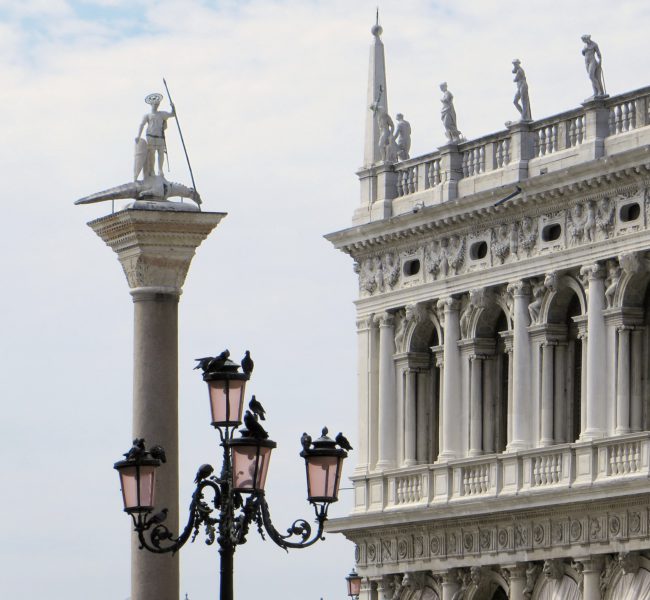
Once home to the powerful Doges who ruled the Venetian Empire, the Doge’s Palace or Palazzo Ducale was the political and administrative seat of the Venetian republic. Combining Byzantine, Gothic and Renaissance architectural styles, the impressive palace houses the Doge’s apartments, the institutional chambers, the courtyard, armoury, prisons and several works of art by renowned Italian artists.
Things to do:
- Climb the impressive golden staircase or the Scala d’Oro towards the Scala dei Giganti, where coronation ceremonies of the newly elected Doge’s took place.
- The Dodge’s apartments hold masterpieces by Veronese, Titian, Tintoretto and others. Tintoretto’s ‘Paradise’, known as the world’s largest painting, takes centre stage inside the Maggior Consiglio hall.
- The vast collection of armaments and weapons inside the armoury are also worth a visit.
- Venture into the darker side of Palazzo Ducale as you cross the Bridge of Sighs over to the prison cells.
Useful information:
- Location: La Piazza San Marco
- Timings: Daily 10:00 am- 6:00 pm (last admission at 4 pm)
- Cost:
- Adults: €25
- Students (aged 6 – 14): €13
- Children under 5: free
- The ticket includes entry into the museums of Piazza San Marcos including the Museo Correr, National Archaeological Museum and the Biblioteca Nazionale Marciana.
- Website: https://palazzoducale.visitmuve.it/
- How to reach: Line 1 Vallaresso or San Zaccaria stop; Line 2 Giardinetti stop; Line 5.1 or Line 4.1, San Zaccaria stop
Campanile di San Marco
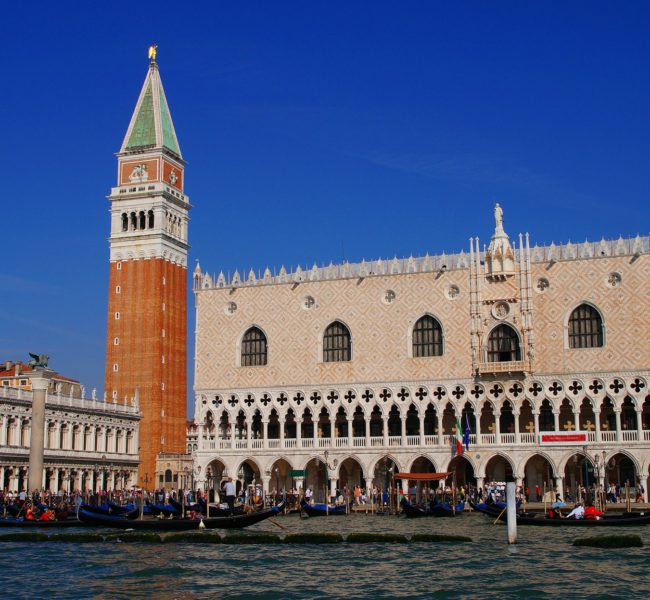
The Campanile di San Marco or St Mark’s Campanile is the bell tower of St. Mark’s Basilica. Being the tallest building in Venice, it offers unparalleled panoramic views of the city and of the Venetian lagoon below, from its observation decks. Rebuilt twice since its initial construction in the 12th century, the present-day structure was built as an exact replica of its predecessor that collapsed unexpectedly in 1902.
Useful information:
- Location: Piazza San Marco
- Timings: Every day from 9:45 am to 9:15 pm (last admission at 8:45 pm)
- Cost:
- Regular: €10
- Children up to 6 years: Free
- Website: http://www.basilicasanmarco.it/basilica/campanile/?lang=en
- How to reach: Water Bus, San Zaccaria or San Marco, lines 1, 2, 41, 42, 51, 52, N and LN.
St. Mark’s Basilica

Also known as the Chiesa d’Oro, or the Golden Church owing to its opulence and golden facades, the Basilica di San Marco represents the pinnacle of Byzantine architecture with its stunning gold mosaics and elaborate domes. Originally built as an extension of the Doge’s Palace in 828 to house Saint Mark’s relics smuggled out of Alexandria, it has been the centre of religious life in Venice across centuries.
Things to do:
- The Museum houses several prominent artworks including the original sculptures of the Horses of St. Mark which are worth discovering.
- The Basilica’s treasury also contains a collection of gold, silver and other precious items brought by the Venetians after their plunder of Constantinople (present-day Istanbul) during the Fourth Crusade.
- Behind the high altar, you’ll find the Pala d’Oro, an impressive altarpiece featuring gorgeous gems and gold. This is also where the San Marco sarcophagus containing St. Mark’s body is located.
- For a truly unique experience, hop on an after-hours tour of the Basilica to delve deeper into its history minus the crowds.
Unravelog tip: Be mindful of your attire while visiting the Basilica. Wear clothes that cover your shoulders and are at least knee-length.
Useful information:
- Location: Piazza San Marco
- Timings:
- Daily: 9:30 am- 5:15 pm
- Sunday: 2:00 pm-5:15 pm
- Loggia dei Cavalli Museum: Sunday morning: 9.30 am to 2:00 pm
- Cost:
- Basilica: €3
- Loggia dei Cavalli-Museum:€7
- Pala d’Oro: €5
- Website: http://www.basilicasanmarco.it/
- How to reach: Water Bus: San Zaccaria or San Marco, lines 1, 2, 41, 42, 51, 52, N and LN.
Doge’s Palace
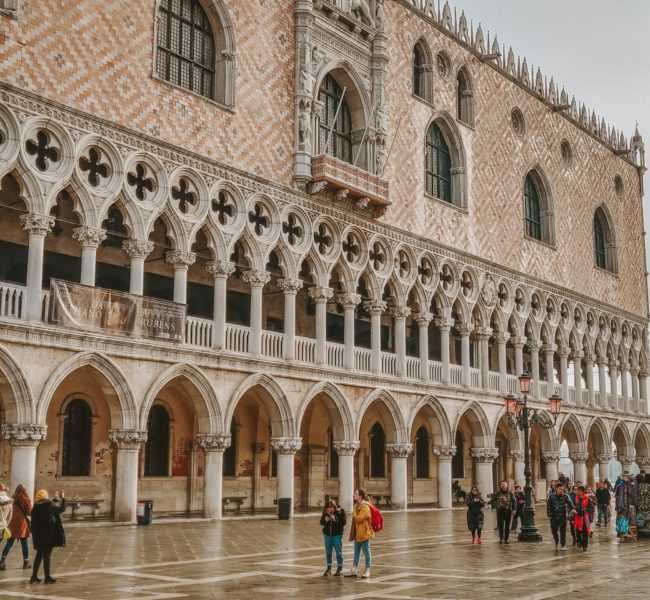
Once home to the powerful Doges who ruled the Venetian Empire, the Doge’s Palace or Palazzo Ducale was the political and administrative seat of the Venetian republic. Combining Byzantine, Gothic and Renaissance architectural styles, the impressive palace houses the Doge’s apartments, the institutional chambers, the courtyard, armoury, prisons and several works of art by renowned Italian artists.
Things to do:
- Climb the impressive golden staircase or the Scala d’Oro towards the Scala dei Giganti, where coronation ceremonies of the newly elected Doge’s took place.
- The Dodge’s apartments hold masterpieces by Veronese, Titian, Tintoretto and others. Tintoretto’s ‘Paradise’, known as the world’s largest painting, takes centre stage inside the Maggior Consiglio hall.
- The vast collection of armaments and weapons inside the armoury are also worth a visit.
- Venture into the darker side of Palazzo Ducale as you cross the Bridge of Sighs over to the prison cells.
Useful information:
- Location: La Piazza San Marco
- Timings: Daily 10:00 am- 6:00 pm (last admission at 4 pm)
- Cost:
- Adults: €25
- Students (aged 6 – 14): €13
- Children under 5: free
- The ticket includes entry into the museums of Piazza San Marcos including the Museo Correr, National Archaeological Museum and the Biblioteca Nazionale Marciana.
- Website: https://palazzoducale.visitmuve.it/
- How to reach: Line 1 Vallaresso or San Zaccaria stop; Line 2 Giardinetti stop; Line 5.1 or Line 4.1, San Zaccaria stop
Bridge of Sighs
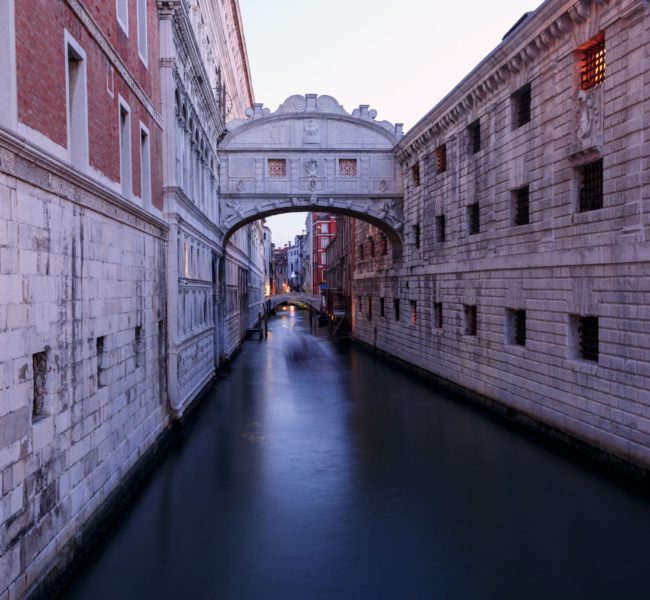
Spanning the narrow Rio di Palazzo canal, this 17th-century baroque style bridge connects the interrogation rooms at the Doge’s Palace to the Prigioni Nuove (New Prison). The enclosed Ponte dei Sospiri or the Bridge of Sighs gets its melancholic name from its dark history of being used to shuttle prisoners condemned to death who would cross the bridge and see the lagoon for the last time.
Things to do: Despite its gloomy past, today the Bridge of Sighs is easily considered to be one of the most romantic places in Venice. It is a tradition now, to kiss your loved one while passing under it for a chance at eternal bliss.
Useful information:
- Location: Bridge of Sighs
- Timings: The Bridge of sighs can only be crossed on foot along with a visit to the Dodge Palace, open daily from 10:00 am to 6:00 pm. However the same can be viewed from any of the neighbouring bridges including the Bridge of Paglia and Bridge of Canonica any time during the day.
Gondola ride at sunset
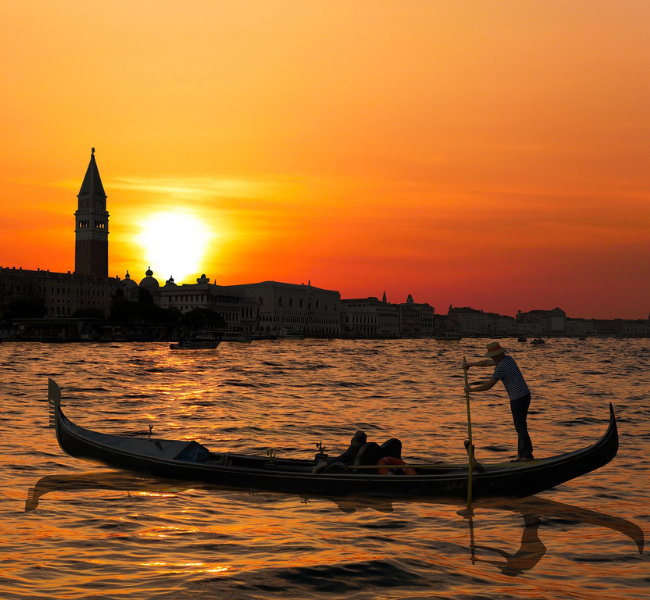
Glide through the romantic Venetian canals on a traditional gondola at sunset for a truly magical experience. An iconic symbol of Venice’s history and tradition, a ride in these hand-carved wooden boats offers a completely different perspective of the city and is not to be missed. One of the main forms of water transportation in Venice, about 400 gondolas ply through the city’s canals and lagoons today.
Unravelog tip:
- Although shared gondola rides are relatively cheaper, private tours offer a more intimate experience apart from offering customisable routes and flexible timings.
- A gondola ride from St. Mark’s Square or the Grand Canal can get quite busy during peak hours. A good alternative to avoid bumper to bumper gondola traffic is to hire one from outside the main tourist areas. The quieter canals around San Polo and Campo San Barnaba areas, as well as the Jewish Ghetto are perfect for just that.
Useful information:
- Duration: A typical gondola ride lasts 40 minutes
- Cost: (Rates are subject to change)
- Private Tours :
- Day rides: €80 (€40 for each additional 20 minutes)
- After 7 pm: €100 (€50 for each additional 20 minutes)
- Shared/Group Tours: Starting from €30
- Private Tours :
Day 2
Rialto Bridge
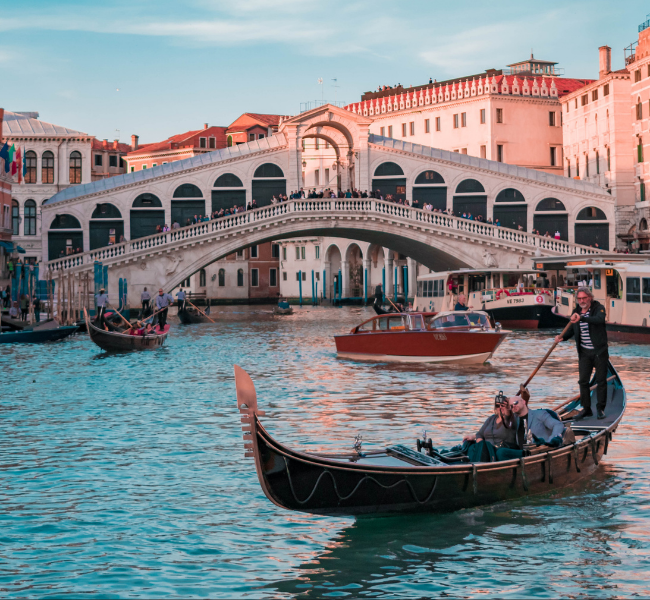
A marvellous feat of engineering connecting the neighbourhoods of San Polo and San Marco, Ponte di Rialto is the oldest of the four bridges spanning the Grand Canal in Venice. Completed within a span of three years in 1592 by master architect Antonio da Ponte, the Rialto Bridge is undoubtedly one of the most celebrated tourist spots in the city.
Unravelog tip: Crossing the bridge can be challenging for tourists with strollers or wheelchairs, since it consists primarily of steps.
Useful information:
- Location: Sestiere San Polo
- Timing: Always open
- Costs: Free entry
- How to reach: Water Bus, Rialto, lines 1, 2 and N.
Rialto Market
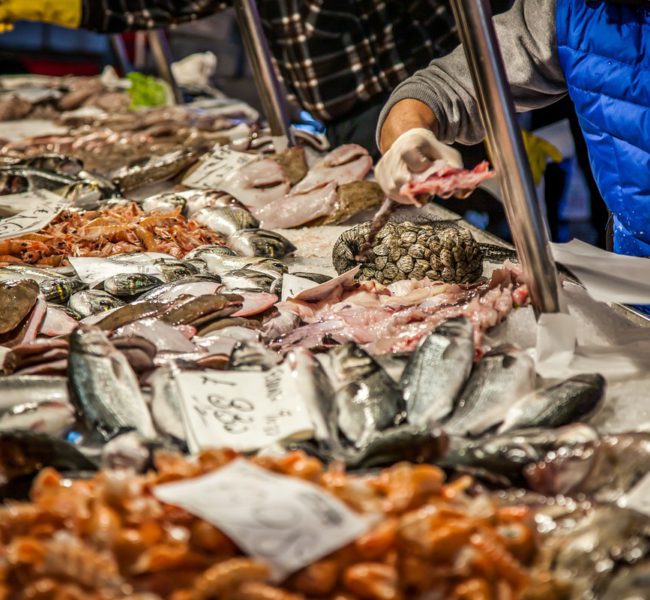
A fundamental part of any gastronomic tour of Venice, the historic and colourful Rialto Market has been serving fresh local produce for over seven centuries. Here you’ll find a wide variety of seasonal vegetables and fruits including the popular artichokes and succulent asparagus from Venice’s Sant’Erasmo island. There’s also an adjoining fish market or ‘Pescheria’ that offers fresh catches from the Adriatic.
Unravelog tip: Visit the market early in the morning to have the most authentic local experience of fishmongers hawking their fresh catch of the day, alongside busy vegetable and fruit vendors.
Useful information:
- Location: Campo de la Pescaria
- Timing:
- Pescheria (Fish Market): Tuesday – Saturday 7:30 am – 12:00 pm.
- Rialto Market: Monday – Saturday 7:30 am – 12:00 pm.
- How to reach: Water Bus: Rialto, lines 1, 2 and N.
Frari Church
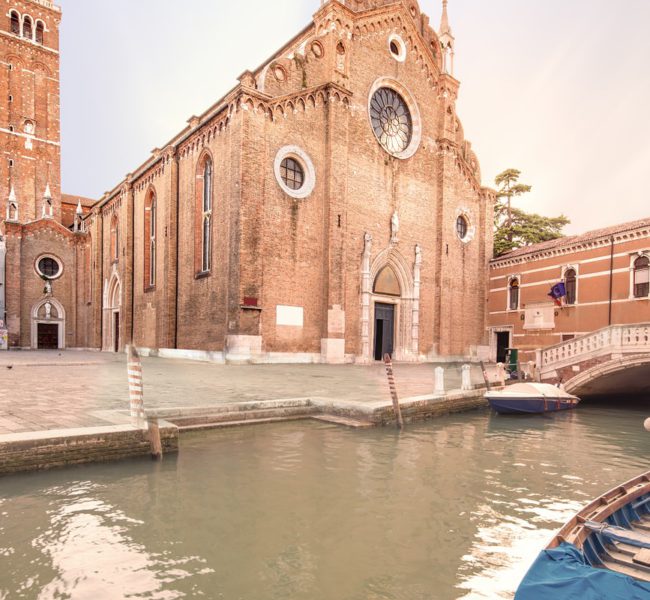
Located in the heart of Venice’s San Polo district in Campo dei Frari, the Basilica di Santa Maria Gloriosa dei Frari, or ‘Frari’ for short, is one of the most impressive and oldest Gothic churches in Venice. In tune with many Franciscan churches, its bland and unembellished facade contrasts with the more ornate and striking architecture inside. It also houses several notable sculptures and artworks apart from being the resting place for many distinguished Venetians including the great painter Titian himself.
Things to do:
Some of the highlights inside the Basilica include Titian’s impressive ‘Assumption of the Virgin painting located on the high altar and Bellini’s ‘Pesaro Madonna’ inside the sacristy.
The colossal pyramid mausoleum of Italian sculptor Antonio Canova and Longhena’s eerie Baroque monument dedicated to Doge Pesaro are also stunning works of art worth admiring.
Useful information:
- Location: San Polo
- Timing:
- Every day: 9:00 am- 6:00 pm
- Sundays: 1:00 pm- 6:00 pm
- Costs:
- Adults: €3
- Students under 30: €1.50
- Children under 11 years: Free entry
- Audio guide: €2
- Website: https://www.basilicadeifrari.it/
- How to reach:
- Water Bus: S.Tomà, lines 1, 2 and N
- Foot: From St. Mark’s square, it takes about 25 minutes and around 15 minutes from the railway station and Piazzale Roma (follow the signs for Frari-Rialto).
Scuola San Rocco
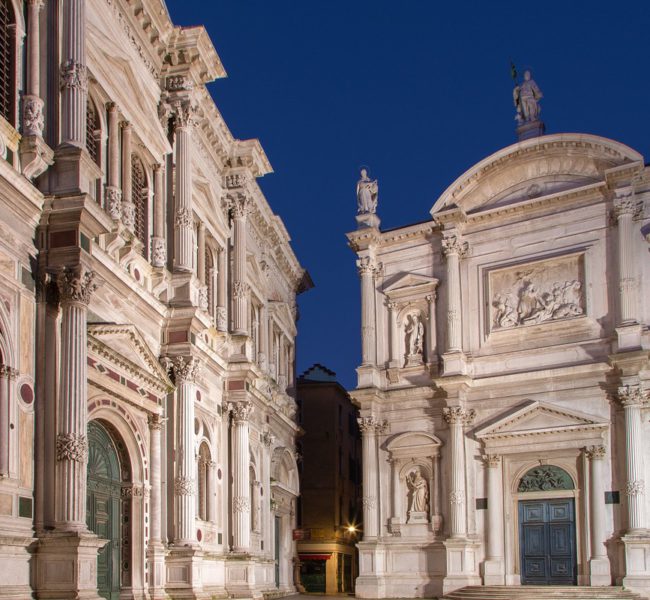
The Scuola Grande di San Rocco is an active confraternity building dedicated to St Roch, patron saint of the plague-stricken. Adorned with Tintoretto’s most celebrated works across its walls and ceilings, the Scuola San Rocco is to Venice what the Sistine Chapel is to Rome. The sombre and dramatic biblical scenes from the New and Old Testaments were completed by the Italian master painter over a span of 24 years.
Things to do:
- Although the nearby Gallerie dell’Accademia holds the largest collection of Venetian art in the world, the impressive frescos and architecture of the Scuola Grande di San Rocco are worth a visit even for those who know little about the subject.
- Visitors can also pay a visit to the Church of Saint Rocco, located in the same square as the Scuola.
Useful information:
- Location: Campo San Rocco, Venezia
- Timing:
- Every day from 9:30 am to 5:30 pm (last admission at 5:00 pm)
- Church of San Rocco: Monday – Saturday: 09:30 am – 12:00 pm (last admission at 11:30 am) and 3:00 pm – 5:30 pm (last admission at 5:00 pm). Sunday: 3:00 pm – 5:30 pm (last admission at 5: 00 pm)
- Costs:
- Full rate: € 10.00
- Reduced rate: € 8.00 (seniors and youth up to 26 years)
- Church of San Rocco: € 2
- Website: http://www.scuolagrandesanrocco.org/
- How to reach: Water Bus: S.Tomà, lines 1, 2 and N.
Ca’ Rezzonico
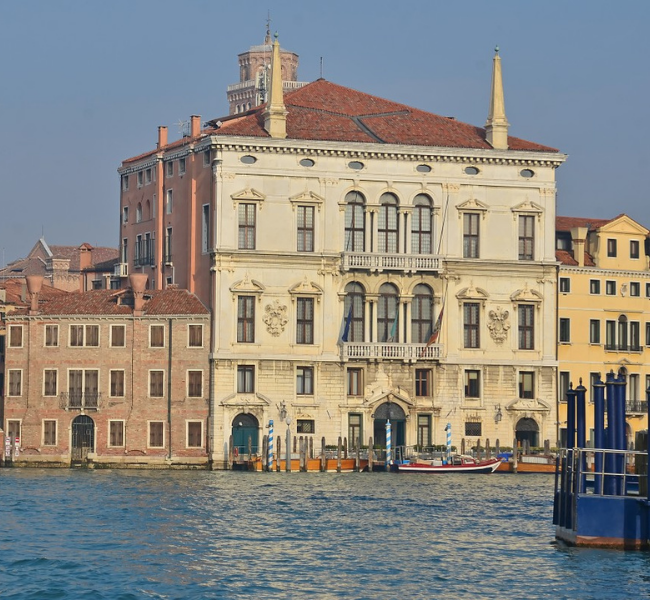
This waterfront palazzo (mansion) located on the banks of the Grand Canal was initially designed by the master Baroque architect Baldassare Longhena in 1649. The construction of the palace spanned over a century and was finally completed by Giorgio Massari in 1756. The palace currently houses the Settecento Veneziano museum (Museum of eighteenth-century Venice) and is one of the few palaces that are open to the public in the city.
Things to do: Visit their bookshop and terraced cafe for views over the Grand Canal.
Useful information:
- Location: Dorsoduro, Venice.
- Timing: Thursday to Sunday: 11:00 am – 5:00 pm (last admission at 4 pm)
- Costs:
- Adults: €10
- Reduced rate for children aged 6 to 14, students aged 15 to 25 and visitors over 65 years: €7.50
- Free for children under 5 years
- Audio guide: €4
- Website: https://carezzonico.visitmuve.it/
- How to reach: Water Bus, Ca´ Rezzonico, line 1.
Basilica di Santa Maria della Salute
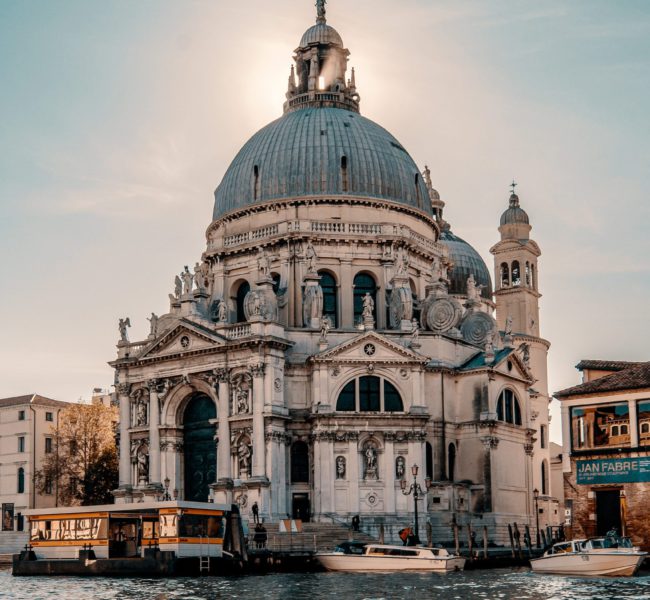
‘La Salute’, dedicated to our Lady of Health, was built to commemorate the end of the plague that took the lives of over 80,000 Venetians in 1631. Designed by Baldassare Longhena, the construction of the Basilica took over 56 years to complete. Prominently located at the entrance of the Grand Canal, the Basilica with its magnificent domes have become an iconic symbol of the city.
Things to do:
- Visit the Basilica’s sacristy which holds an impressive collection of Titian masterpieces including his earliest known work alongside dramatic frescos and other artworks.
- Visit the basilica in the month of November to experience the ‘Festa Della Salute’ – a pilgrimage of thanksgiving where the huge main doors of the basilica are opened, and Venetians walk across the canal, paying their respects to the Virgin Mary. This event celebrates the end of the plague in 1631.
Useful information:
- Location: Campo della Salute
- Timing:
- Church: Every day from 9:30 am-12:00 pm and from 3:00 pm- 5:30 pm
- Sacristy:
- Monday to Saturday: 10 am – 12 pm and 3 pm – 5 pm
- Sunday: 3 pm – 5 pm
- Costs:
- Entry to the basilica: Free
- Entry to the sacristy: Adults: €4, Students: €2. Free for children under the age of 10.
- Website: https://basilicasalutevenezia.it/la-basilica/
- How to reach: Water Bus: Salute, line 1.
Catch a concert
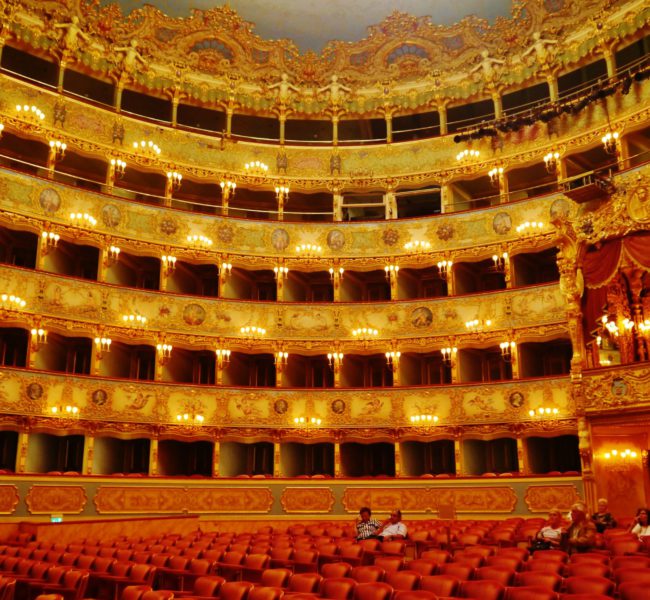
An epicentre for classic music for centuries, catching a live music performance while in Venice is a no-brainer. From listening to the opera at the legendary La Fenice – widely considered to be one of the top opera houses in the world – to being serenaded by world-famous orchestras or grooving to smooth jazz at the Venice Jazz Club, Venice has a vibrant and happening music scene that is not to be missed.
Things to do:
- Opera: Apart from La Fenice, opera fans can enjoy the art at the 17th-century music rooms of Palazetto Bru Zane. At the waterfront Palazzo Barbarigo Minotto overlooking the Grand Canal, Musica a Palazzo offers a unique experience of a travelling opera. The monumental Scuola Grande dei Carmini by Musica in Maschera combines music with the mysterious and seductive world of Venetian masks and period costumes.
- Classical music: Catch live Baroque music at palazzi and churches around the city including the grand salons and music rooms of Palazetto Bru Zane, Palazzo Querini Stampalia and La Pietà, known for its association with the composer Vivaldi.
- Classical music fans are in for a treat at St George’s Anglican Church where the Venice Music Project brings to life historic baroque musical scores.
- Jazz: Jazz lovers can also catch the Venice Jazz Festival held every July across iconic venues around the city.
- The La Biennale di Venezia (Venice Biennale) also brings together a host of contemporary music, art, theatre and dance across various venues in the city every year.
Day 3
Murano
Murano is the second-largest island in the Venetian lagoon and home to Venetian glass-making factories since the 13th century. After the Doge of Venice ordered all Venetian glassmakers to move their furnaces to Murano in 1291 as a precaution against fires, the island quickly became associated with the most coveted and high-quality glass in the world.
Things to do:
- Witness artisans working on glassware using century-old techniques at one of the many factories dotted across the island and maybe even buy a glass souvenir or two.
- For a deeper insight into the art of glass-making, visit the Museo del Vetro housing over 4,000 stunning glass artefacts from as far back as Egyptian times.
- Pay a visit to the Basilica of Santa Maria and San Donato, one of the oldest churches in the lagoon.
Useful information:
- Location: Murano, Venice
- How to reach: Water Bus, lines 41, 42, DM and LN.
Burano
Popular for its handmade lace and brightly coloured houses, Burano is a small fishing island set within the Venetian lagoon and a photographic wonderland. Explore the quaint alleys of the island and witness the carnival of colours reflected on its narrow canals. Take a leisurely walk past frolicking children and busy fishermen hawking their exploits of the day. Or catch a glimpse of local lacemakers weaving the legendary Burano fabric, known to have adorned several kings and queens across Europe in the past.
Things to do:
- Visit the Museo del Merletto (Lace Museum). Formerly home to Venice’s Lace School, the museum boasts more than two hundred rare, priceless pieces and details about the evolution of the art of lace-making in Venice from the 16th to 20th centuries.
- Witness Burano’s 17th-century leaning bell tower, Campanile Storto di Burano. The bell tower is one of the most heavily leaning towers in Italy and owes its signature tilt to the marshy conditions of the lagoon.
- Have a meal at one of the many canalside restaurants in colourful Burano. Try the Grigliata Mista (seafood mixed grill) at Trattoria Da Primo or Trattoria da Romano or go for the risotto di gò, a more traditional Burano dish.
Useful information:
- Location: Burano, Venice
- How to reach: Take the water bus LN from Fondamenta Nuovo or San Zaccaria
Torcello
Once the most prominent and populated island on the Venetian lagoon, it was largely abandoned due to a malaria outbreak that decimated a majority of its population. The power subsequently moved to Venice and Torcello eventually transformed into a no man’s land with just over a dozen people calling this northernmost island on the lagoon their home today.
Things to do:
- Visit the Attila’s Throne, a stone chair located on the island’s central square believed to have been used by Attila, King of the Huns.
- The Santa Maria Assunta Cathedral in Torcello is a Byzantine-Roman-style basilica built in the year 639. Apart from being the oldest building in Venice, the Torcello Cathedral also exhibits Byzantine mosaics and a striking campanile that offers panoramic views of the surrounding Lagoon.
- The Santa Fosca church located next to the Basilica is also worth a visit.
Useful information:
- Location: Torcello,Venice
- Timing: Always open
- How to reach: Take a Vaporetto from Fondamenta Nuove or San Zaccaria. Line LN.
Go restaurant hopping along Fondamenta Misericordia

Fondamenta literally means a street with a canal on one side and houses on the other. The areas around Fondamenta Misericordia and Fondamenta Ormesini are studded with restaurants, wine bars, ice-cream shops and bakeries. Perfect for a casual late night stroll and restaurant hopping, this is one of the best places in the city to take in the Venetian frenzy minus the tourist crowds.
Things to do: You’re truly spoilt for choice when it comes to food and drinks along the Fondamenta Misericordia. Here are a few of the many restaurants and wine bars for you to choose from.
- Try the Vino Vero, for natural wines and gourmet crostini or the sullaluna, for excellent tea and both sweet and savoury bites.
- The Il Paradiso Perduto is one of the oldest osterie on the Fondamenta della Misericordia and is popular for its lively atmosphere while the Osteria da Rioba offers a fancier alternative.
- Refresh with a pint of draft or craft beer at the Birreria Zanon and savour toasted sandwiches, salads and drinks offered at Ae Bricoe.
- Enjoy your drinks, seated on wooden boats anchored in front of the Al Timon or tuck into a sandwich, while seated along the Grand canal at CapaToast.
Useful information:
- Location: Fondamenta Misericordia
Looking for more sights and experiences to add to your Venice itinerary? Check out these eight-day excursions from the island city that will definitely feed your wanderlust. While you’re at it, don’t miss out on these photogenic spots in Venice that make for some splendid pictures.




